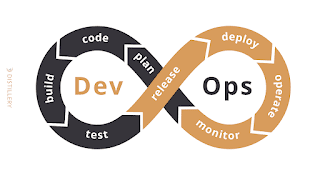Computer architecture
Computer architecture
Computer architecture refers to the design and organization of a computer system, including its components, structure, and the way they interact to perform tasks. It lays the foundation for the efficient execution of programs and the overall functionality of a computer. Computer architects design and optimize the hardware and software components to ensure optimal performance, reliability, and scalability.
Here are some key aspects and components of computer architecture:
1. Central Processing Unit (CPU): The CPU is the "brain" of the computer, responsible for executing instructions and performing calculations. It consists of the control unit, arithmetic logic unit (ALU), and registers. The CPU interprets and executes instructions fetched from memory.
2. Memory: Computer architecture includes various levels of memory, such as cache, main memory (RAM), and secondary storage (hard drives, solid-state drives). Memory plays a critical role in storing instructions, data, and intermediate results during program execution.
3. Instruction Set Architecture (ISA): The ISA defines the interface between the hardware and software of a computer system. It specifies the instructions, registers, and data formats that the CPU understands and supports. Different computer architectures may have different ISAs, such as x86, ARM, or PowerPC.
4. Input/Output (I/O) Systems: I/O systems enable communication between the computer and external devices, such as keyboards, mice, printers, and network interfaces. Computer architecture designs efficient mechanisms for data transfer between the CPU, memory, and I/O devices.
5. System Bus: The system bus is a communication pathway that connects various components of a computer, including the CPU, memory, and I/O devices. It enables the transfer of data and instructions between these components.
6. Pipelining and Parallel Processing: Computer architecture incorporates techniques like pipelining and parallel processing to improve system performance. Pipelining divides the execution of instructions into smaller stages to overlap their execution. Parallel processing involves the simultaneous execution of multiple tasks or instructions to achieve faster computation.
7. Caches: Caches are small, high-speed memory units located close to the CPU. They store frequently accessed data and instructions to reduce memory access latency and improve overall system performance.
8. Virtual Memory: Virtual memory enables the execution of programs larger than the available physical memory. It uses disk storage as an extension of RAM, allowing efficient management of memory resources and enabling multitasking.
9. Instruction-Level Parallelism: Instruction-level parallelism techniques, such as superscalar and out-of-order execution, enable the simultaneous execution of multiple instructions to exploit instruction-level parallelism in programs.
10. Power and Energy Management: Computer architecture designs consider power and energy efficiency, aiming to minimize power consumption and manage heat dissipation. Techniques like clock gating, power management units, and low-power modes are used to optimize energy usage.
11. Scalability and Performance Optimization: Computer architecture designs aim to support scalability, allowing the system to handle increasing workloads. Performance optimization techniques, such as caching algorithms, branch prediction, and instruction scheduling, are employed to enhance system performance.
12. Security and Reliability: Computer architecture includes security features and mechanisms to protect the system against threats and ensure data integrity. It also incorporates error detection and correction techniques to enhance system reliability.
In conclusion, computer architecture is the backbone of modern computing, encompassing the design and organization of computer systems. It combines hardware and software elements to achieve efficient and reliable computation. Computer architects continuously innovate and optimize architectures to meet the increasing demands of performance, power efficiency, and scalability in today's computing landscape.




Comments
Post a Comment